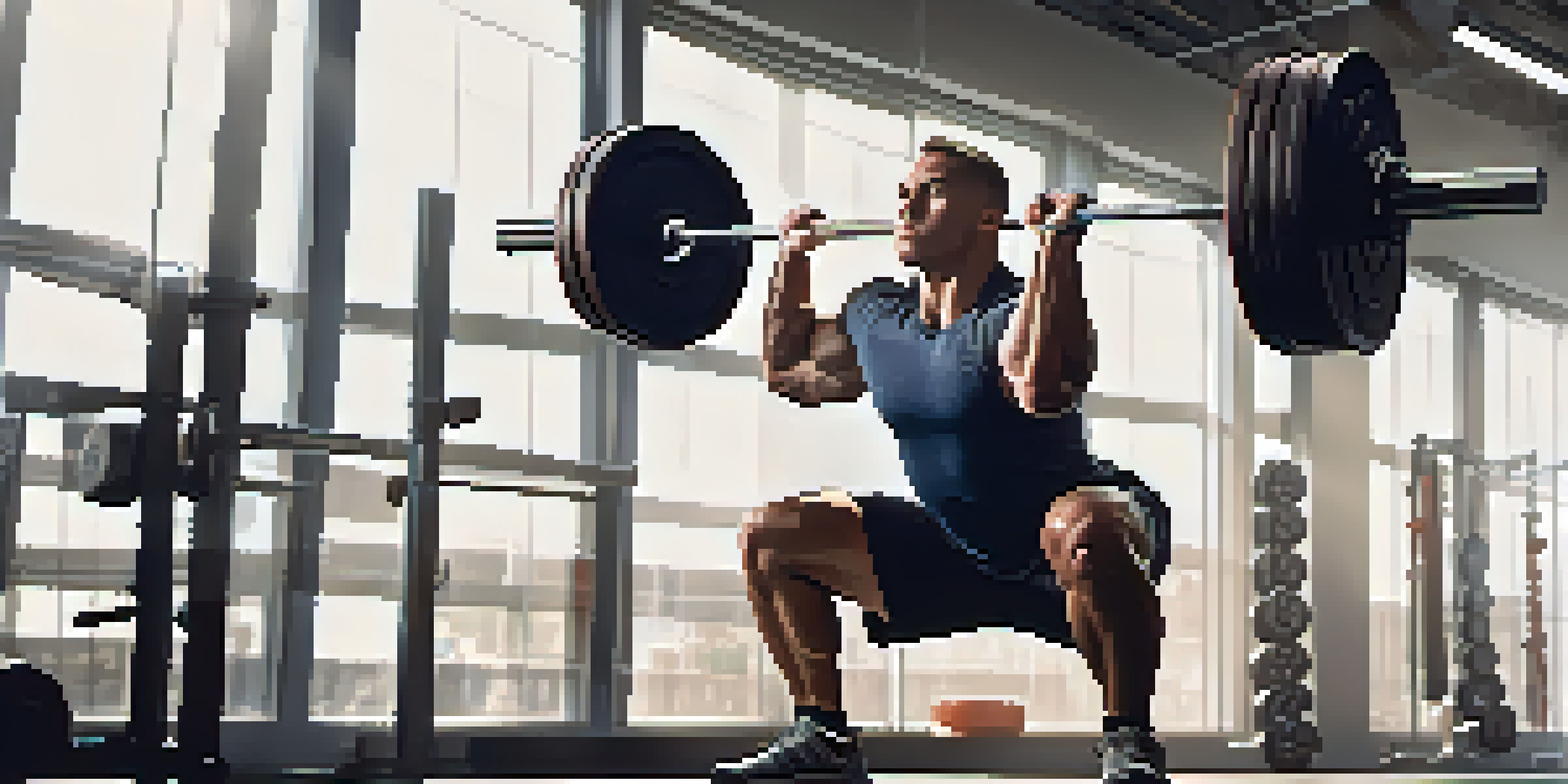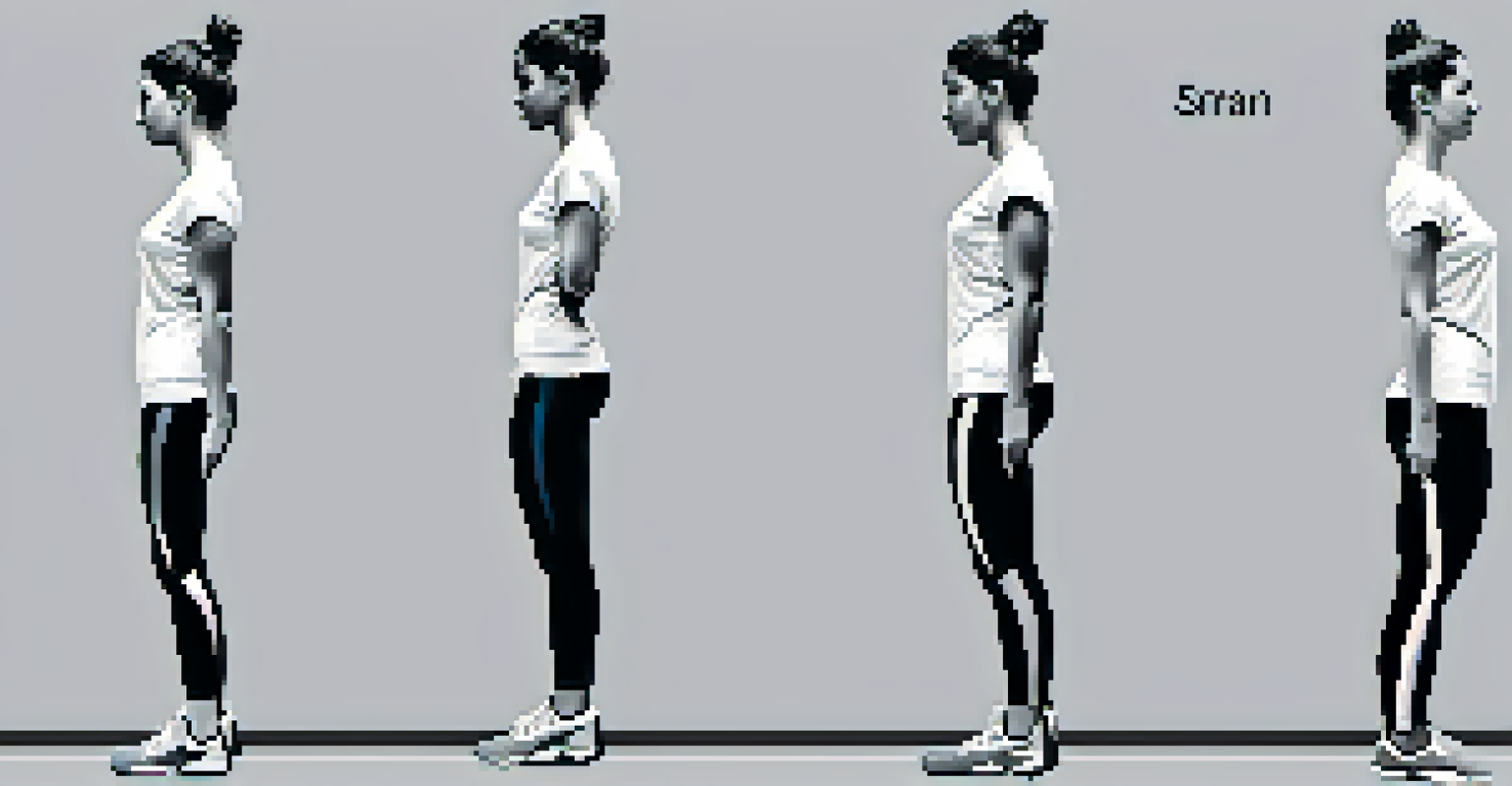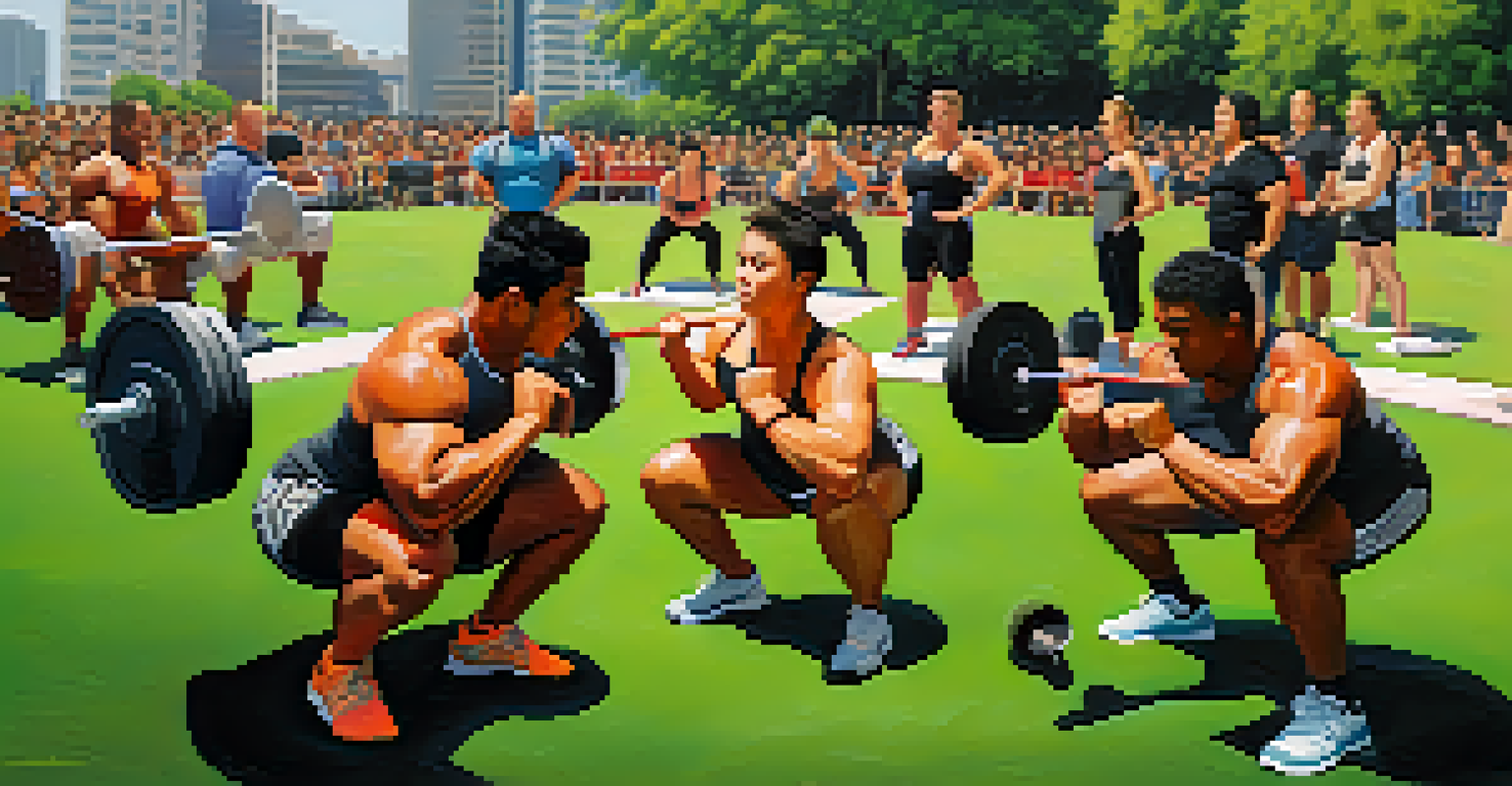The Squat: Powerlifting's Core Exercise Explained

What is the Squat in Powerlifting?
The squat is often referred to as the king of all exercises in powerlifting. It involves bending the knees and lowering the body, then pushing back up to a standing position. This movement is crucial for building strength and mass, primarily targeting the legs, hips, and core.
Strength does not come from physical capacity. It comes from an indomitable will.
In powerlifting competitions, the squat is one of three main lifts, alongside the bench press and deadlift. Athletes perform it with a barbell across their shoulders, which adds to the challenge and effectiveness of the exercise. Understanding the mechanics of the squat is essential for anyone looking to excel in powerlifting.
Not only does the squat help in powerlifting, but it also has applications in everyday life. From picking up objects to standing up from a chair, the squat mimics natural movements, making it a fundamental exercise for overall strength and mobility.
Benefits of Squatting for Strength and Muscle Growth
Squatting offers numerous benefits that extend beyond just building leg strength. It engages multiple muscle groups, including the quadriceps, hamstrings, glutes, and core, making it a highly efficient exercise. This compound movement can lead to significant muscle growth when performed regularly.

Additionally, squats promote better balance and coordination. By requiring stability throughout the motion, they enhance your overall athletic performance. This is particularly beneficial for athletes who rely on explosive movements, as squats help improve power and agility.
Squats Build Strength and Mobility
The squat is a fundamental exercise that enhances leg strength, overall mobility, and mimics natural movements in daily life.
Furthermore, squatting can boost your metabolism, as lifting heavy weights requires more energy. This means that incorporating squats into your routine can aid in fat loss while building lean muscle mass, making it an excellent choice for those looking to get fit.
Proper Squat Technique: Getting It Right
To reap the full benefits of squatting, proper technique is crucial. Start by standing with your feet shoulder-width apart, with your toes slightly pointed out. As you begin the squat, push your hips back and bend your knees, keeping your chest up and back straight throughout the movement.
The only bad workout is the one that didn't happen.
It’s essential to ensure that your knees track over your toes and don’t cave inward. This helps prevent injury and maximizes the effectiveness of the squat. Aim to lower your body until your thighs are at least parallel to the ground, then push through your heels to rise back up.
If you're new to squatting, consider practicing with just your body weight or a light barbell. Focusing on mastering your form first will set the foundation for gradually increasing weights and achieving your strength goals.
Common Mistakes to Avoid When Squatting
Even seasoned lifters can make mistakes during squats, which may lead to injuries or ineffective workouts. One common error is allowing the knees to collapse inward, which can put excessive strain on the joints. Always remember to keep your knees aligned with your toes while squatting.
Another mistake is leaning too far forward, which compromises your back's safety and stability. Instead, maintain an upright torso throughout the movement, focusing on engaging your core to support your spine. This not only protects you but also enhances your lifting capability.
Proper Technique is Essential
Mastering squat technique is crucial to prevent injuries and maximize the effectiveness of the exercise.
Lastly, some lifters rush through their squats, sacrificing form for speed. Take your time, focus on the movement, and ensure you're executing each rep with intention. Quality over quantity should always be the goal in your training.
Incorporating Squats into Your Training Routine
Integrating squats into your training schedule can significantly enhance your overall strength. Aim to include squats at least once or twice a week, depending on your fitness goals and experience level. This frequency allows your muscles to adapt and grow while minimizing the risk of overuse injuries.
Consider varying your squat routine to keep things interesting and challenge your body. You can try different squat variations, such as front squats, sumo squats, or box squats, each targeting muscles slightly differently. This variety will help prevent plateaus and keep your workouts fresh.
Additionally, pairing squats with accessory exercises, such as lunges or leg presses, can further boost your leg strength. This balanced approach not only supports your squat performance but also contributes to overall functional fitness.
The Role of Nutrition in Powerlifting and Squatting
Nutrition plays a fundamental role in powerlifting and can significantly impact your squat performance. Consuming a balanced diet rich in protein, carbohydrates, and healthy fats helps fuel your workouts and aids in recovery. Protein, in particular, is essential for muscle repair and growth after intense lifting sessions.
Staying hydrated is equally important, as dehydration can hinder your strength and stamina during workouts. Aim to drink water before, during, and after your training sessions to maintain optimal performance. Electrolyte-rich drinks can also be beneficial, especially during longer workouts.
Nutrition Supports Squatting Success
A balanced diet and proper hydration are vital for optimizing performance and recovery in powerlifting and squatting.
Lastly, consider timing your meals around your workouts. Eating a nutritious meal or snack an hour or two before squatting can provide the energy needed for an effective session, while post-workout nutrition helps replenish your body and support muscle recovery.
Conclusion: Mastering the Squat for Powerlifting Success
Mastering the squat is essential for anyone serious about powerlifting. Not only does it help build strength and muscle, but it also fosters better movement patterns that benefit everyday life. By practicing proper technique and avoiding common mistakes, you can maximize the effectiveness of your squats.
Integrating this core exercise into your training routine, along with a focus on nutrition and recovery, will set you on the path to success in powerlifting. Remember, consistency and dedication are key to achieving your goals.

As you embark on your journey with squats, be patient with yourself. Progress takes time, and each squat session is an opportunity to improve and become stronger. Embrace the process, and you'll reap the rewards both in and out of the gym.